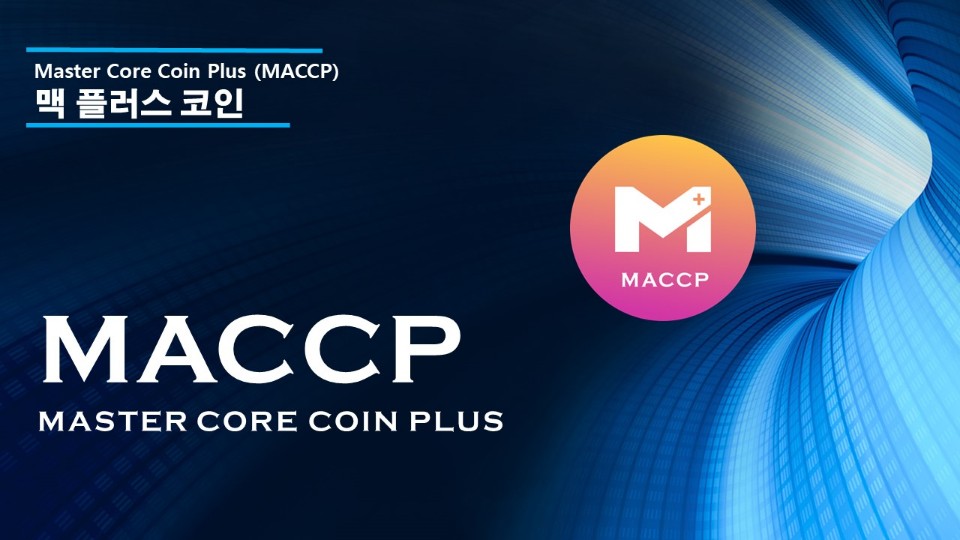What is The Primary Algorithm Used in Bitcoin Mining?
Bitcoin mining is a crucial part of how Bitcoin works. It involves solving complex problems to add new transactions to the Bitcoin network. The main tool used for this process is a special algorithm. In this article, we will explore the primary algorithm used in Bitcoin mining, its features, and its importance.
Key Takeaways
- Bitcoin mining uses a special algorithm called SHA-256.
- SHA-256 helps secure transactions and keeps the network safe.
- Proof of Work is the method Bitcoin uses to confirm transactions.
- Different mining algorithms exist, but SHA-256 is the most common for Bitcoin.
- Future changes in mining technology may improve how Bitcoin works.
Understanding Bitcoin Mining
Bitcoin mining is a process where computer systems compete to solve complex math problems. This helps to validate transactions on the Bitcoin network. When a miner successfully solves a problem, they add a new block to the blockchain and receive a reward in Bitcoin. Here are some key points about Bitcoin mining:
- Cryptography is essential for securing transactions.
- Miners ensure that all transactions are legitimate and prevent fraud.
- The decentralized nature of Bitcoin means that no single entity controls the network.
The Role of Cryptography in Bitcoin
Cryptography is the backbone of Bitcoin mining. It ensures that transactions are secure and that miners can trust the system. Without cryptography, the network would be vulnerable to attacks.
How Bitcoin Transactions Are Verified
When a transaction is made, it is sent to the network. Miners then compete to verify the transaction by solving a cryptographic puzzle. Once verified, the transaction is added to the blockchain.
The Importance of Decentralization
Decentralization means that no single person or organization controls Bitcoin. This is important because it makes the network more secure and resistant to censorship.
Bitcoin mining is not just about earning money; it’s about maintaining the integrity of the entire network.
In summary, Bitcoin mining is a crucial part of how Bitcoin works. It involves solving problems, verifying transactions, and ensuring that the network remains secure and decentralized.
The SHA-256 Algorithm
Origins of SHA-256
SHA-256, which stands for Secure Hash Algorithm 256-bit, was created by the National Security Agency (NSA) in the United States. It is part of the SHA-2 family of cryptographic hash functions. This algorithm is widely used in various security applications and protocols, including Bitcoin mining. Its design focuses on providing strong security and efficiency.
How SHA-256 Works in Bitcoin Mining
In Bitcoin mining, SHA-256 plays a crucial role in the process of verifying transactions and creating new blocks. Here’s how it works:
- Transaction Data: Miners collect transaction data from the Bitcoin network.
- Hashing: The data is then hashed using the SHA-256 algorithm, producing a fixed-size output.
- Nonce: Miners adjust a number called a nonce to find a hash that meets specific criteria.
- Block Creation: Once a valid hash is found, a new block is created and added to the blockchain.
Security Features of SHA-256
SHA-256 is known for its strong security features, which include:
- Collision Resistance: It is extremely hard to find two different inputs that produce the same hash output.
- Pre-image Resistance: Given a hash, it is nearly impossible to reverse-engineer the original input.
- Fast Computation: The algorithm can quickly compute hashes, making it efficient for miners.
The SHA-256 algorithm is essential for maintaining the integrity and security of the Bitcoin network. Without it, the system would be vulnerable to attacks and fraud.
Summary
In summary, SHA-256 is a vital component of Bitcoin mining, ensuring that transactions are secure and that the network remains decentralized. Its strong security features make it a reliable choice for protecting data in the blockchain.
Proof of Work in Bitcoin
Defining Proof of Work
Proof of Work, often called PoW, is a method used in Bitcoin to ensure that transactions are secure and verified. In this system, miners compete to solve complex math problems. The first one to solve it gets to add a new block to the blockchain and is rewarded with Bitcoin. This process helps keep the network safe and prevents fraud.
Why Bitcoin Uses Proof of Work
Bitcoin uses Proof of Work for several reasons:
- Security: It makes it hard for anyone to cheat the system.
- Decentralization: No single person controls the network, making it fair for everyone.
- Incentives: Miners are rewarded for their work, encouraging them to keep the network running.
Challenges of Proof of Work
While PoW has its benefits, it also faces some challenges:
- Energy Consumption: Mining requires a lot of electricity, which can be harmful to the environment.
- Centralization Risks: If only a few miners control most of the power, it can lead to unfair practices.
- Scalability Issues: As more people use Bitcoin, the network can become slower and more expensive to use.
Proof of Work is a crucial part of how Bitcoin operates, ensuring that transactions are secure while also presenting challenges that need to be addressed.
Comparing Bitcoin Mining Algorithms
When it comes to Bitcoin mining, different algorithms can be used, but SHA-256 is the primary choice. Here, we will compare SHA-256 with other mining algorithms to understand their differences and impacts.
SHA-256 vs. Other Algorithms
- SHA-256: The main algorithm used in Bitcoin mining. It is known for its security and reliability.
- Scrypt: Used by Litecoin, it requires more memory, making it harder to mine with regular hardware.
- Ethash: This algorithm is used in Ethereum and is designed to be ASIC-resistant, promoting decentralization.
Efficiency and Speed Considerations
| Algorithm | Speed (Hashes/sec) | Energy Consumption (W) |
|---|---|---|
| SHA-256 | High | Moderate |
| Scrypt | Moderate | High |
| Ethash | Moderate | Moderate |
Impact on Energy Consumption
- Bitcoin mining using SHA-256 is energy-intensive, but it is more efficient than some alternatives.
- Other algorithms like Scrypt can consume even more energy, raising concerns about sustainability.
- The choice of algorithm can significantly affect the overall energy footprint of mining operations.
The choice of mining algorithm not only affects the efficiency of mining but also has a significant impact on the environment.
In summary, while SHA-256 remains the dominant algorithm for Bitcoin mining, understanding the differences with other algorithms helps in evaluating their efficiency, speed, and energy use. This knowledge is crucial for miners and those interested in the future of cryptocurrency mining.
The Future of Bitcoin Mining Algorithms
Potential Changes to Mining Algorithms
As the cryptocurrency world evolves, changes to mining algorithms are likely. New algorithms may emerge that are more efficient and environmentally friendly. This could lead to:
- Improved energy efficiency
- Faster transaction processing
- Enhanced security features
Innovations in Mining Technology
The mining industry is seeing exciting innovations in technology. These advancements can help miners operate more effectively. Some key innovations include:
- Use of artificial intelligence to optimize mining operations
- Development of specialized hardware for better performance
- Adoption of renewable energy sources to power mining farms
Environmental Considerations
With growing concerns about the environment, the future of Bitcoin mining must address sustainability. Miners are exploring ways to reduce their carbon footprint. Important considerations include:
- Transitioning to renewable energy sources
- Implementing energy-efficient mining practices
- Collaborating with environmental organizations to promote sustainability
The future of Bitcoin mining will likely focus on balancing profitability with environmental responsibility. This shift is essential for the long-term success of the industry, especially as regulations tighten and public scrutiny increases.
Technical Aspects of Bitcoin Mining
Hardware Used in Bitcoin Mining
Bitcoin mining requires specialized hardware to solve complex mathematical problems. The most common types of hardware include:
- ASIC miners: These are designed specifically for mining Bitcoin and are the most efficient.
- FPGA miners: These are more flexible than ASICs but less powerful.
- GPU miners: While not as efficient for Bitcoin, they are used for other cryptocurrencies.
Software Solutions for Miners
Miners also need software to connect their hardware to the Bitcoin network. Some popular mining software includes:
- CGMiner: A widely used program that supports various hardware.
- BFGMiner: Similar to CGMiner but focuses on FPGA and ASIC hardware.
- EasyMiner: A user-friendly option for beginners.
Network Difficulty and Its Impact
The Bitcoin network adjusts its difficulty approximately every two weeks. This means:
- Higher difficulty: More computational power is needed to mine new blocks.
- Lower difficulty: Less power is required, making it easier for miners.
- Impact on rewards: As difficulty increases, the rewards for mining can decrease, affecting profitability.
The world of Bitcoin mining is constantly changing, and miners must adapt to new technologies and challenges to stay competitive.
In summary, understanding the technical aspects of Bitcoin mining, including the hardware, software, and network difficulty, is crucial for anyone looking to participate in this digital gold rush. The right tools can make a significant difference in mining success.
Conclusion
In summary, the main algorithm used in Bitcoin mining is called SHA-256. This special method helps miners solve tough math problems to add new blocks to the Bitcoin network. By using SHA-256, miners can keep the system safe and make sure that transactions are real. Understanding this algorithm is important because it shows how Bitcoin works and why it is secure. As technology grows, Bitcoin mining will keep changing, but SHA-256 will likely remain a key part of its success.
Frequently Asked Questions
What is Bitcoin mining?
Bitcoin mining is the process of adding new transactions to the Bitcoin network. Miners use powerful computers to solve complex math problems, which helps secure the network and verify transactions.
Why is SHA-256 important in Bitcoin mining?
SHA-256 is a special math formula used in Bitcoin mining. It helps keep transactions safe and makes sure that miners can’t cheat the system.
What does Proof of Work mean?
Proof of Work is a method that Bitcoin uses to confirm transactions. It requires miners to do a lot of work (solving problems) before they can add new blocks to the blockchain.
How does mining impact the environment?
Mining Bitcoin uses a lot of electricity, which can harm the environment. Many people are looking for ways to make mining greener and use less energy.
Can Bitcoin mining be done on a regular computer?
While it’s possible to mine Bitcoin on a regular computer, it’s not very effective. Most miners use special machines that are much faster and more powerful.
What might change in Bitcoin mining in the future?
In the future, Bitcoin mining could change with new technologies and methods. There’s a lot of research happening to make it more efficient and less harmful to the planet.
Stay informed with daily updates from Blockchain Magazine on Google News. Click here to follow us and mark as favorite: [Blockchain Magazine on Google News].
Get Blockchain Insights In Inbox
Stay ahead of the curve with expert analysis and market updates.
latest from tech
Disclaimer: Any post shared by a third-party agency are sponsored and Blockchain Magazine has no views on any such posts. The views and opinions expressed in this post are those of the clients and do not necessarily reflect the official policy or position of Blockchain Magazine. The information provided in this post is for informational purposes only and should not be considered as financial, investment, or professional advice. Blockchain Magazine does not endorse or promote any specific products, services, or companies mentioned in this posts. Readers are encouraged to conduct their own research and consult with a qualified professional before making any financial decisions. The featured image used is just a creative depiction of the title and it does not intend to hurt sentiments of any person or institution. If it hurts anyone sentiments, please do not hesitate to reach out to Blockchain Magazine.

 Bitcoin
Bitcoin  Ethereum
Ethereum  XRP
XRP  Tether
Tether  Solana
Solana  Dogecoin
Dogecoin  USDC
USDC  Cardano
Cardano  Lido Staked Ether
Lido Staked Ether  TRON
TRON  Chainlink
Chainlink  Avalanche
Avalanche  Wrapped stETH
Wrapped stETH  Stellar
Stellar  Wrapped Bitcoin
Wrapped Bitcoin  Sui
Sui  Hedera
Hedera  Toncoin
Toncoin  Shiba Inu
Shiba Inu  WETH
WETH  Polkadot
Polkadot  Parkcoin
Parkcoin  LEO Token
LEO Token  Litecoin
Litecoin  Bitcoin Cash
Bitcoin Cash  Bitget Token
Bitget Token  Uniswap
Uniswap  Official Trump
Official Trump  Hyperliquid
Hyperliquid  Wrapped eETH
Wrapped eETH  Pepe
Pepe  USDS
USDS  NEAR Protocol
NEAR Protocol  Ethena USDe
Ethena USDe  Aave
Aave  Aptos
Aptos  Internet Computer
Internet Computer  Ondo
Ondo  Ethereum Classic
Ethereum Classic  Monero
Monero  POL (ex-MATIC)
POL (ex-MATIC)  OKB
OKB  Cronos
Cronos  Mantle
Mantle  Dai
Dai  Algorand
Algorand  MANTRA
MANTRA  Render
Render 




